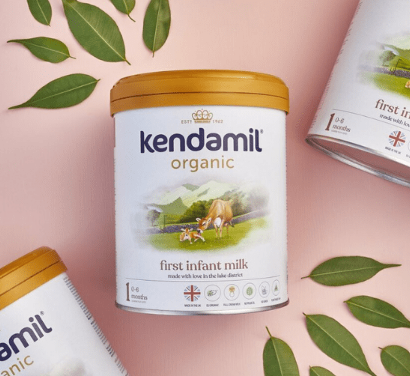Cross-posting used to feel efficient. Like hitting multiple birds with one perfectly aimed stone. But in today’s dynamic social media landscape, that stone is increasingly falling flat.
The truth is, treating all social media platforms as one giant megaphone is a recipe for diluted impact and missed opportunities. The era of simply broadcasting the same message across all channels is fading fast.
Welcome to the age of the channel-first social media approach, where understanding and respecting the unique nuances of each platform isn’t just a good idea, it’s essential for success. And in this blog, we’ll not only explore why this shift is necessary but break down exactly how to approach each major platform the right way.

Would you walk into a formal business meeting and address everyone with the same casual slang you use with your best friends? Probably not. Each environment demands a different tone, style, and even language. The same principle applies to social media platforms.
1. Different Audiences, Different Expectations
The demographics and user intent on TikTok are vastly different from those on LinkedIn. What resonates with a Gen Z audience looking for entertainment won’t necessarily capture the attention of professionals seeking industry insights. Cross-posting forces you to create content that tries to be a jack-of-all-trades, often ending up as a master of none.
2. Platform-Specific Features and Formats
Instagram thrives on imagery, X excels in concise, real-time updates and conversations. LinkedIn is the go-to for professional networking and in-depth articles. By cross-posting, you’re often shoehorning content into formats where it doesn’t naturally fit, hindering its potential reach and engagement. A beautiful carousel on Instagram becomes a static, less impactful post on X. A thought-provoking LinkedIn article gets lost in the rapid-fire feed of TikTok.
3. Diminished Engagement
When your content feels generic and out of place on a particular platform, users are less likely to engage. They’re scrolling for content that feels native to their chosen environment. A lack of engagement signals to the platform’s algorithm that your content isn’t valuable, further limiting its reach.
4. Missed Opportunities for Community Building
Each platform fosters a unique type of community and conversation. A channel-first approach allows you to tailor your messaging and engagement strategies to nurture these specific communities. You can participate in relevant Facebook Groups, create engaging polls on Instagram Stories, or contribute to industry-specific discussions on LinkedIn. These opportunities are lost when you’re simply pushing out the same blanket content.
5. Brand Inconsistency (Ironically)
While the intention behind cross-posting might be to maintain brand consistency, the opposite can often occur. A tone or style that feels authentic on one platform can come across as jarring or inappropriate on another, ultimately damaging your brand perception.

The Power of a Channel-First Approach
So, what does a channel-first strategy actually look like? It’s about being intentional and strategic with your content creation and distribution.
Tailored Content for Maximum Impact
By understanding the nuances of each platform, you can create content that is specifically designed to resonate with its audience and leverage its unique features. This leads to higher engagement, better reach, and ultimately, stronger results.
Authentic Engagement and Community Building
When your content feels native to a platform, you’re more likely to attract genuine engagement and build meaningful relationships with your audience. You can participate in conversations in a way that feels natural and relevant.
Optimised Performance and Algorithm Favour
Platforms reward content that is well-suited to their format and engages their users. By creating channel-specific content, you’re more likely to be favoured by the algorithm, leading to greater visibility.
Data-Driven Insights
By analysing the performance of platform-specific content, you gain valuable insights into what resonates best with different segments of your audience, allowing you to refine your overall social media strategy.
Embracing the Shift
Moving away from cross-posting requires a shift in mindset and potentially more effort upfront. However, the long-term benefits of a channel-first approach far outweigh the initial investment. It’s about understanding your audience, respecting the unique characteristics of each platform, and crafting content that truly connects.

Platform-Specific Best Practices
Here’s how to make the most of a channel-first approach across major platforms:
TikTok
- Tone: Casual, humorous, and trend-savvy.
- Best formats: Short-form video (15–60 seconds), trending audio, storytelling.
- Do: Lean into trends, show personality, and use native text overlays and captions.
- Don’t: Overly polish your videos, authenticity wins here!
- Tone: Visually curated but still relatable.
- Best formats: Reels, carousels, Stories with polls or questions.
- Do: Use strong visuals, branded templates, and interactive Story features.
- Don’t: Post text-heavy content, Instagram is a visual-first platform.
- Tone: Professional, informative, and value-driven.
- Best formats: Long-form posts, carousels, articles, native video.
- Do: Share thought leadership, industry insights, and career milestones.
- Don’t: Repurpose informal or meme-heavy content from other platforms.
- Tone: Community-focused and versatile
- Best formats: Longer posts, Facebook Lives, Group discussions, event promotions.
- Do: Use Groups strategically, reply to comments, and leverage Facebook Events.
- Don’t: Ignore the older demographic, tailor content to family-first, value-focused users.
X (formerly Twitter)
- Tone: Witty, direct, and current.
- Best formats: Threads, real-time updates, polls, GIFs.
- Do: Engage in trending conversations, post regularly, and use relevant hashtags.
- Don’t: Cross-post long-form content or ignore the fast-paced nature of the feed.
So, ditch the copy-paste button and embrace the power of a channel-first strategy. Your audience, and your analytics, will thank you.





